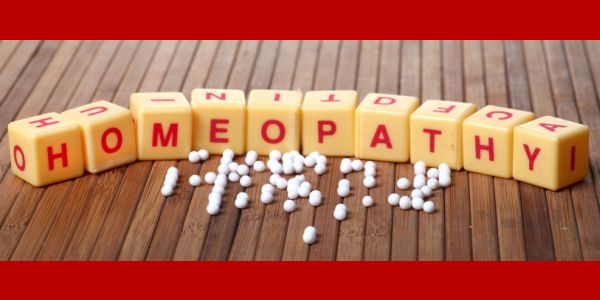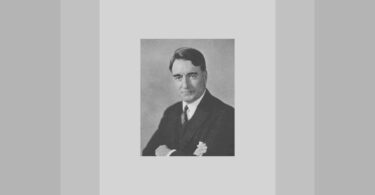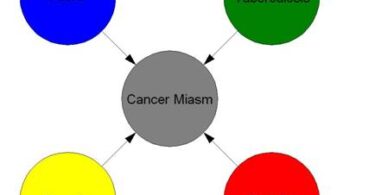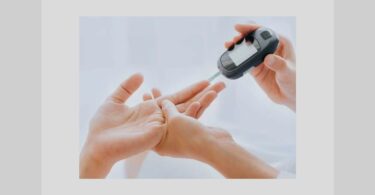Reprinted with permission from The New Homeopath – Journal of the Society of Homeopaths
My belief is that the best clinical results are obtained by a detailed and complete history, and a thorough analysis of the case. Despite this, my experience over the last three decades has been that in my enthusiastic search for the simillimum, I can sometimes end up with two or more remedies, all of which repertorise well, and whose use I can justify equally well in terms of material medica. In the past, which remedy I would want to start with, would then be a matter of guesswork.
4-5 years ago, I began to experiment with muscle testing. It was a technique introduced to me by my chiropractor when sorting out my back. I subsequently attended a course on Touch For Health, which exposed me to a number of techniques, but I was not satisfied with the experience. I found it was too complicated for my purposes, and the main aim for me was simply to confirm as accurately as possible my choice of remedies.
I knew there was something to muscle testing, but I was yet to formulate what was the best approach for me. So I began to experiment. At the end of the consultation, when all the work was done and I had to decide on my final choice of remedies, I would muscle test the patient. This was a way for me to ask the vital force directly what it thought of my choice of remedy.
So what is muscle testing? It is the assessment of the tone of a muscle or muscle group, and how this changes after the person is exposed to a stimulus. For our purposes, the most important stimulus to test is the remedy.
Through experimentation it is clear to me that the vital force can perceive the presence of the remedy if it is close to the body, even if it not ingested or olfacted. There are lots of other stimuli that can be tested. Verbal suggestions which the person can understand easily is a useful one, eg. frequency of repetition of the remedy etc, but I find the more complex the ideas that are tested, the more room for error. Best to keep it simple. Specific parts/organs of the body can also be tested, and then by holding the remedy close to them while testing can give an indication of how a particular remedy affects them.
In some ways using muscle testing has been a giant leap of faith for me, as throughout my scientific and medical training I have been conditioned to adopt a purely rational approach. There was something of merit here, yet it lacked a mechanism which I understood, and had many unknown variables – a bit like Homeopathy really. It became a melting pot at the interface between conventional thought and intuition.
It was a particular experience with a patient that really brought home to me, in an unequivocally clear way, the value of this technique. I saw him in the clinic for the first time on 24/5/18.
The patient was a gentleman in his 50s, who spoke hardly any English. He came alone, without an interpreter. He proceeded to hand me a set of notes. He had been diagnosed with a Diffuse Large B Cell Lymphoma which was advanced, progressing and most likely terminal.
In October 2017 he had epigastric and lower abdominal pain, and a CT scan showed that the lymph nodes and peritoneum were involved. In December 2017 he had the first of 2 doses of chemotherapy (R-CHOP).
At the end of January 2018 he had an acute admission for stomach pains. He had a laparotomy which showed a perforation caused by the advancing lymphoma which had not responded to the 2 doses of chemotherapy. An omental repair was carried out palliatively. Post-operatively there were complications with a pleural effusion and lung collapse, as well as infection.
He hadn’t had any further treatment for the lymphoma when he came to see me. As you may well imagine, I felt rather stressed at the time. Here I had this very ill patient with whom I couldn’t communicate.
I got him to call a friend to translate, then explained that the most appropriate course of action was to go under the care of the medical team who had been caring for him. He was adamant that he did not want any more chemotherapy. It was clearly established that he was aware of the seriousness of his condition, and that he still wanted me to treat him. He had come a long way to see me. What to do?
He managed to communicate to me that he was in a lot of lower abdominal pain, worse lying on either side, better on his back. He showed me he wore a belt for support, and was better for external pressure. That was the extent of the history I was able to obtain.
On examination he had fullness on his right upper abdominal quadrant, consistent with metastatic spread in the peritoneum, tenderness in his right iliac fossa, and multiple enlarged inguinal lymph nodes. His spleen was not palpable. He had lost 8kg in weight since the start of the illness.
It was pretty obvious that the lymphoma was widespread in the abdominal cavity and possibly elsewhere, and likely that the pains were caused by some intestinal obstruction.
Due to the language barrier, I could not elicit any other information. There was little to prescribe on. In desperation, I gathered together all the remedies in the Ramakrishnan ( aur, iod, spong, scroph-n, thuj, con, phyt) and Banerji (bell, thuj, kali-m, hepar, calc-f, ferr-p), protocols for lymphoma, as well as a couple of others I selected, such as scir, carc, and ars, and muscle tested the lot. Fortunately, the results were very clear.
He tested strong for ars and bell, and also for the combination I chose in the selected potencies and the selected frequency. So I started him on Bell 30 twice daily and Ars 200 once daily.
2 weeks later on 7/6/18, he reported that the abdominal pains, although still there, were significantly better, and that he had more energy.
2 weeks after that on 5/7/18, he had no abdominal pain, but had easy satiety. He was keen to go back to work, and started light duties as part of a phased return.
He continued to improve, became stronger and regained the weight he had lost.
Remarkably by 2/8/18 he was working 5 days a week, 7 hrs shifts cleaning, with no heavy lifting.
I maintained the same treatment until his appointment on 7/2/19, when muscle testing showed he needed a change to Bell 200 one daily and Ars 1M one weekly. By this time, he was as strong as an ox and looked well.
The last time I saw him was on 2/5/19. He said he had plans to return to his country of origin. After that he stopped coming to his appointments. A friend of his told me that he was fine in October 2019.
I have now carried out thousands of muscle tests, and have gradually refined the technique, feeling more confident about how and when to use it, and this is what I would like to share.
Before testing a remedy, positive and negative controls need to be established. I usually test the right arm, unless there are shoulder or other issues which would make this painful or not applicable.
The patient flexes the shoulder joint to 90 degrees, with the arm straight and the palm down. I do not look directly at the patient’s face when I’m testing. The patient’s limbs are kept uncrossed. I explain the procedure to my patients, asking them to resist my pressure as I press down.
I usually apply pressure with my index and middle fingers only, placed an inch or two above the wrist joint, with as much awareness as I can muster. I apply a steady and incremental force until it equalises the person’s maximal ability to resist.
I make a mental note of the force required to achieve this by the proprioceptive feedback I get from my fingers (the feeling of stretch I feel in my joints). This is the positive control. If you can’t feel any resistance from the patient, they either haven’t understood the instructions, or there is some other issue that needs to be identified and addressed.
Obviously, different people with different physical strengths and states of health will have different results, and the testing technique needs to be adapted to take that into consideration. For example, with elderly patients, in order to maintain sensitivity to their muscle tone, I only use my little finger. In athletes, I use my whole palm.
I then place the index and middle fingers of my other hand on the forehead at the midline, about an inch above the eyebrows, where I imagine the third eye would be, just touching lightly. Holding this position I then muscle test again using the SAME pressure as on the initial test. Almost invariably, the arm gives way under a significantly lighter pressure than the one which was used in the initial test. The explanation as to why this occurs is still not entirely clear to me, but the procedure in some way disrupts the flow of the vital force or chi along a central meridian, and it’s a useful negative control.
Fig.2 Negative control: On testing the arm is weak and gives way
I then repeat the muscle test on the right arm, this time placing the remedy under consideration close to the patient, usually in their left hand, as I test. I note what force is required to overcome the resistance on the arm.
I use four grades: “Weak” is when the arm gives way easily, comparable to that of the negative control. “Strong” is when it takes the same or more pressure as that of the positive control. “Medium”, is when it is in between the two, and “very strong” is when the patient can withstand significantly greater pressure than the positive control.
Sometime you feel as if when you apply the pressure you almost bounce off them. This is an exciting response, as you know the remedy is one that has the ability to really power up the vital force.
If a strong response is elicited by a remedy, I can double check by touching the forehead again using the negative control technique explained above, and I expect that the arm will be stronger with this remedy than it was when the negative control assessment was originally made without a remedy, thus confirming the contribution the remedy is making to strengthening the vital force.
I then test the other remaining remedies accordingly. When I have to make a decision between my shortlist of carefully selected remedies, this procedure usually makes the choice of remedy very clear, and at this point I am happy to prescribe the one that elicited the strongest response.
I try and test blindly, so as not to influence the results. Often, a remedy that I was convinced would be strong because it repertorised so well on paper, tests really weak – I still find it surprising, but helpful to know.
I always retest to make sure the results are consistent and reproducible. If two remedies test equally strong at this stage, I tell the patient that this time I want to test which remedy is a priority, and I then find that one remedy remains strong, and the other one which previously showed a consistently strong response, now becomes weak. This interaction between my conscious instructions and the patient’s bodily response still amazes me.
This technique is useful, but not foolproof.
For starters, if the positive and negative controls are the same, then it is totally unreliable.
The test is highly dependent on a consistent technique, which means it becomes more accurate with greater experience and the development of sensitivity to the patient’s muscle tone. However, it is not purely a question of tone, as to my surprise I can sometimes tell when I first make contact with the fingers but before applying any pressure whether the arm will be weak or not. Some kind of energetic interaction is taking place at that point. In addition, I imagine that there will be differences in result for different testers. You have to develop the method that works for you.
I have often been tempted to run a double-blind trial to test outcomes, but have felt it would be unjustifiable to send a patient away with a remedy for which they could potentially test weak, so I haven’t done so.
At the clinic, even though I tend to confirm a remedy by muscle testing before prescribing, I do not have a 100% success rate, so it is very clear that this technique is not an absolute guarantee of success.
The greatest drawback is the number of false positive results. This means that the muscle tests strong for a particular remedy, but the remedy doesn’t have the desired clinical outcome, be it when testing for the totality of symptoms in a chronic case or in an acute situation.
If a remedy tests positive, it means it is in some way in harmony with the vital force, but might not correct the central imbalance. For example, a patient notices that their nails are stronger and break less on follow-up, implying that the remedy has affected the vital force in a positive way, but it was a peripheral effect, as the main complaint remains the same.
This technique is very useful to discern the most useful remedy once a shortlist has been made. It presumes that a competent selection of potentially useful remedies has been made, as the simillimum has to be amongst them, otherwise if will not have the capacity to resolve the presenting problem completely.
Sometimes both positive and negative controls are weak. When this occurs, drinking some water can often solve the problem. Dehydration seems to impinge on the test.
One way of checking this is to test for a positive control and then get the patient to tug at their hair gently while you test again. Usually the test is weak if there is dehydration. This reverses within a couple of minutes after drinking some water if this was the cause of the inconsistency.
The testing can be refined further to test the potential effect of the chosen remedy on various organs, but this is outside the scope of this article.
I invite you to try out this technique for yourself and check its veracity. It has helped me to avoid going down a blind alley on many occasions. Finding the simillimum sometimes can be a real challenge, and this is a useful tool to keep you on the right path.
Refs:
The Banerji Protocols, Prasant and Pratip Banerji, Dr Prasant Banerji Research Foundation, 2013.
A Homeopathic Approach To Cancer, A U Ramakrishnan, and C Coulter, Ninth House Publishing, 2001.







I have used this process for a number of things, mostly food related allergies, but have also used in when two remedies fit.
Thank you for the article
Hi Laurie,
thank you for your comment. Have you found that it makes a difference in terms of successful outcomes?
Please relocate to Pittsburgh PA USA!!!! You sound awesome. I tried muscle testing on my mom yrs ago but never felt very confident about myself. I finally stopped using homeopathy after I had followed an internet doc and took a remedy for acid reflux and got worse. Reflux is very common in people that I know but there seems to be little offered by MDs other than PPI’s. Had a scope done 2 wks ago (lower third of esophagus mildly inflamed and small hiatal hernia). Prescribed PPI but haven’t taken it. I have back pain with this. Is there anything that tightens the valve to the stomach?
Hi Margaret,
I understand your predicament, but don’t give up. If the remedy is not well indicated, it can stir things up. On the other hand, I have seen time after time that the correct remedy will settle down the oesophageal inflammation and increase the tension on the cardiac sphincter and sort out the reflux. You need to find an experienced homeopath who can can look at the complete picture.
I am a vet-zootechnician and homeopathic autodidact. I am in a tandem allopathy-homeopathy with my niece a medical doctor trained in Cuba. We have joined on the Covid19 challenge to simply save lives where allopathy not only is irresponsive but causes locally tremendous medicament intoxication problems. I have transmiited your study to my niece for future refining of remedy finding techniques. The answer was positive but also “the orthopedic discovered a 8.5 cm large tumor in my right foot. While she is currently on her way to Quito the capital of Ecuador in order to produce all medical screening CT, biopsy etc. We would very much appreciate your assistence and experience from the lymphoma case you used for demonstrating the technique in order to focus on the tumor case in front of us. It is too early to know what exactly we have in front of us, also whether surgical means are necessary etc.
Thank you for your kind reply
Ruediger
Hi Ruediger,
I may be able to give you some pointers, but best to discuss this problem privately, rather than on a public platform. Find me on Facebook.
best wishes
GB
Gabriel do you ever give a seminar on your technique?
Hi Anne,
I haven’t so far. It is a hands-on skill, so I suspect that a Zoom seminar may not be that useful. I would suggest practising on as many people as you can until you get a feel for it. You can test various foodstuffs to see the responses. The subject just needs to hold the thing you are testing, maybe close to their chest, and you can ask the question is this good or bad. Then test bleach or detergent, and see how the response compares.
Dear Dr. Gabriel,
Many thanks for the interesting article. I’ve seen the muscle testing technique successfully used by another homeopath and would love to learn it myself. She attributes the positive test to whatever the vital force needs at the particular time of testing. Then later tests again and typically a different remedy is needed. She has seen that over time and a few remedies, the original complaint is resolved.
Once lockdown settles down, I would welcome some training on the technique and know of other ‘young homeopaths’ who are also interested in learning.
Dear D Gabriel,
Your article is a lovely read.
I would like very much to know about Medical Astrology which is mentioned kn your bio on this page
The oesophageal sphincter is said to be sensitive to the concentration of hydrogen ions present in the stomach. During the stomach’s churning process it constricts well enough to prevent an overflow of gastric contents into the oesophagus via reflux. To increase the pH of the stomach during digestion, it’s advisable to take a few (10-15ml) spoons of apple cider vinegar plus lemon infusion just before meal, and to avoid drinking plain water 30 minutes before, during, and within 30minutes after eating.
Also Vitamin B. complex improves muscle contraction, so taking it would impact positively on the muscles of the oesphageal sphincter.
Lastly, oil in food is capable of prolonging its stay in the stomach. So, consider reducing the quantity of oil in your meals.
Hope this helps.